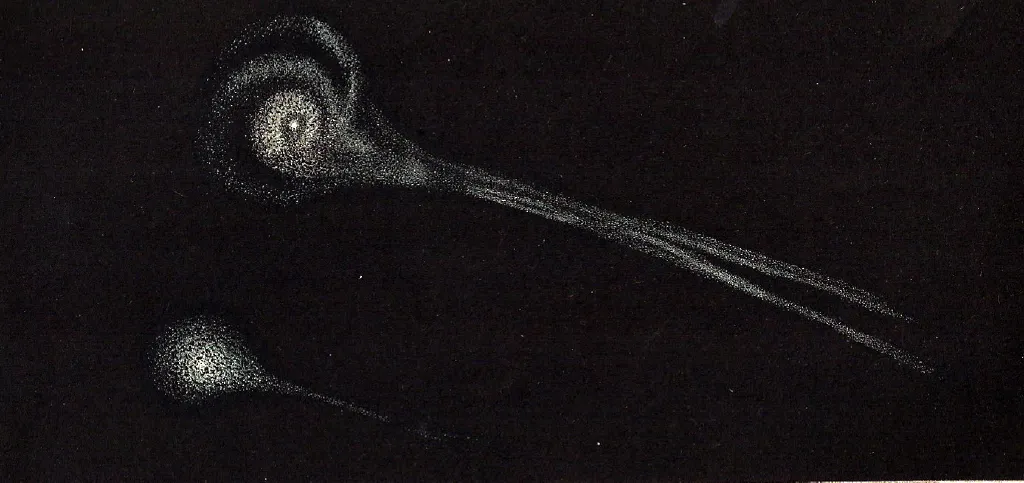Predictions are in force for heightened Andromedid meteor shower activity on the night of 2 December, with peak activity centred on 19:00 UT.
Predicted zenithal hourly rate values of up to 200 meteors per hour have been made.
As a consequence, any observations of Andromedid meteors made on the nights of 1/2 December and 2/3 December will be of great importance.
Any shower meteors that do appear will have very slow speeds travelling at 16 km/s.
As a comparison, the fastest meteors are from the Leonid meteor shower which peaks mid-November.
These meteors have a geocentric velocity of 70 km/s.
For more advice, find out when the next meteor shower will occur

What is the Andromedid meteor shower?
You’re probably familiar with the major meteor showers of the year.
Displays from the Quadrantids, Lyrids, Perseids, Orionids and Geminids are regularly reported upon.
As well as the more reliably active showers, there are many weak displays that occur on an annual basis.
One example is the weak Andromedid meteor shower, which results from the break up of comet 3D/Biela.
As our chart above shows, the radiant of the Andromedid meteor shower - the point in the sky from which the shower meteors appear to emanate - is near stars Almach and Mirach in the constellation Andromeda.
A short history of Comet 3D/Biela

The ‘D’ in the name of a comet means it has either been lost, broken up or just plain disappeared.
Comet 3D/Biela was discovered by Jacques L. Montaigne in March 1772 and independently by Charles Messier.
It was later seen again in 1805 by Jean-Louis Pons.
Its short periodic nature wasn’t determined until 1826 when the comet was recovered by Captain Wilhelm von Biela, a German-Austrian military officer and amateur astronomer, who calculated the object’s orbit.
Comet 3P/Biela, was determined to have a 6.7-year period orbit and became the third periodic comet known after 1P/Halley and 2P/Encke.
3P/Biela was observed as predicted in 1832 but poor circumstances for the 1839 return meant it wasn’t seen again until 1845 when its nucleus was observed to have split in two.
The two nucleus components had separated even further during the 1852 return, an observation which proved to be the last for this object as it was never sighted again.
It subsequently became known as 3D/Biela.
A new Andromedid outburst for 2023?

Two spectacular Andromedid meteor storm outbursts were seen on 27 November 1872 and again in 1885.
Observed rates were in excess of 1,000 meteors per hour over a period of 4 hours.
From observations made, it was estimated that the peak zenithal hourly rate for these outburst events could have exceeded 5,000 meteors per hour.
Both outbursts were believed associated with 3D/Biela.
A prediction based on numerical simulations by Paul A. Wiegert et al. ((Astron. J., 145 (3), 70 (2013)) suggests there could be a strong naked-eye Andromedid outburst in early December 2023 due to meteoroids released from 3D/Biela in 1649.
Predicted ZHR values of up to 200 meteors per hour have been made.
From the UK, the Andromedid meteor shower radiant position is well placed, reaching an altitude in excess of 80 degrees around 21:00 UT.
With potentially clear gaps predicted for some areas this weekend and cold, crisp conditions, observation of possible Andromedid meteor shower activity is encouraged.
A bright 71%-lit waning gibbous Moon will rise just after 21:00 UT on the night of 2 December and as it rises, its glare will interfere somewhat.
As a result, the favourable time to observe the Andromedid meteor shower will be the early part of the evening from 18:00 – 21:00 UT.
